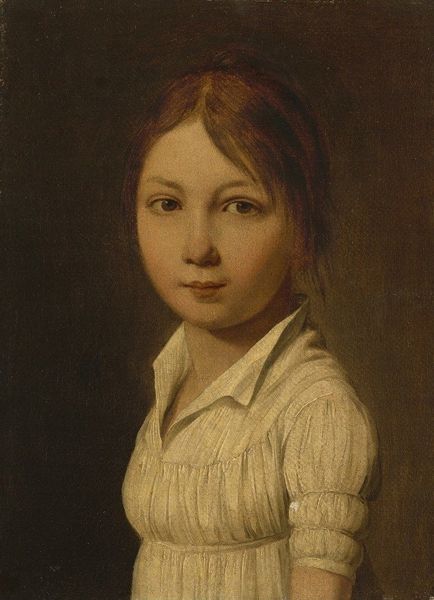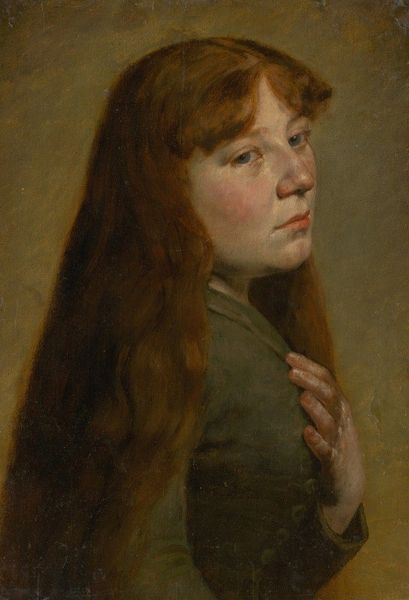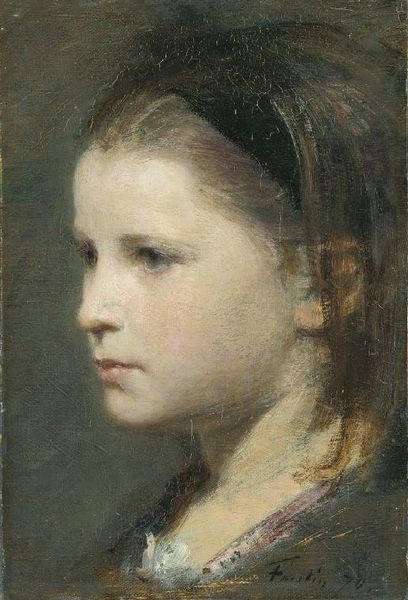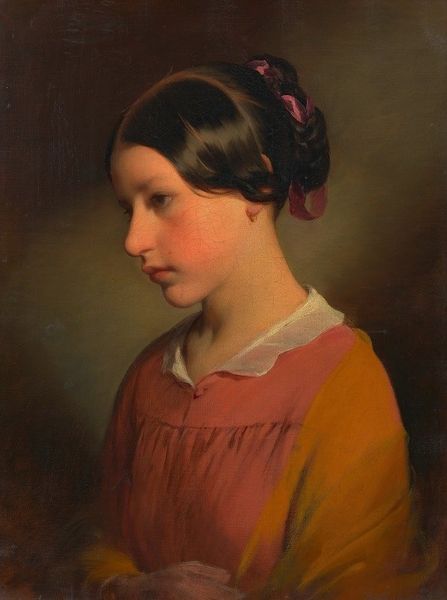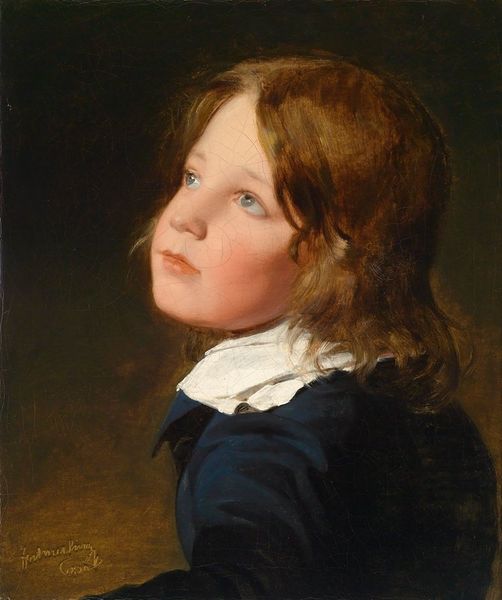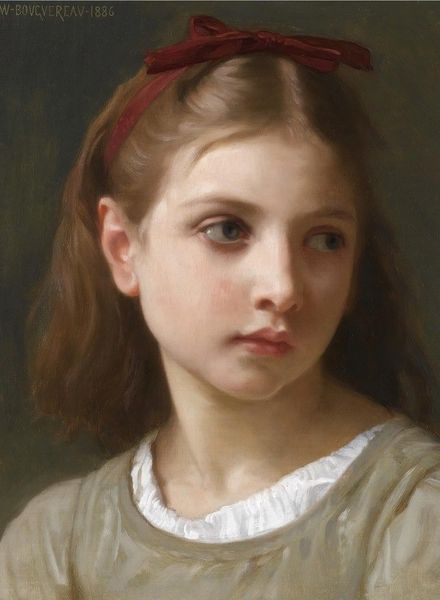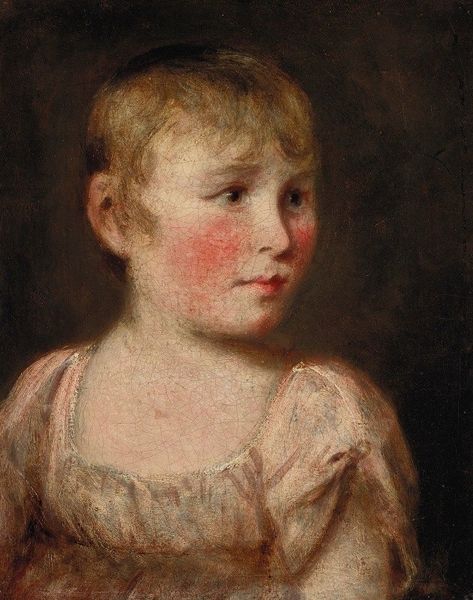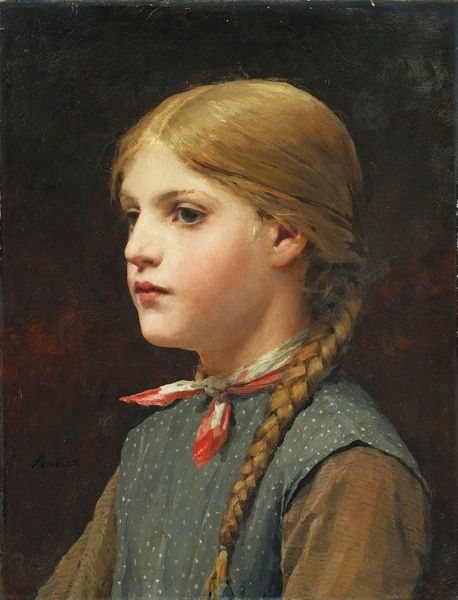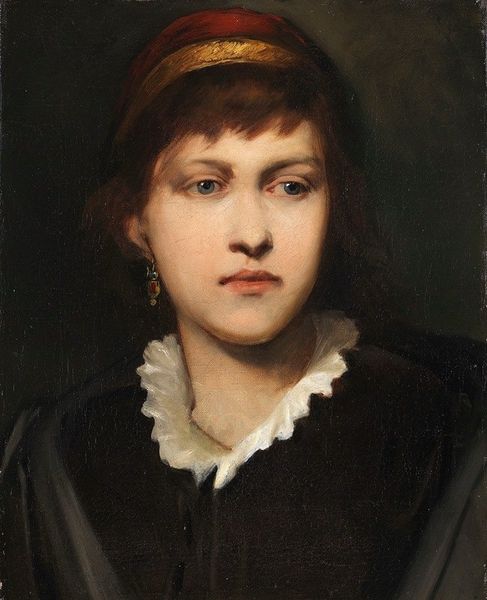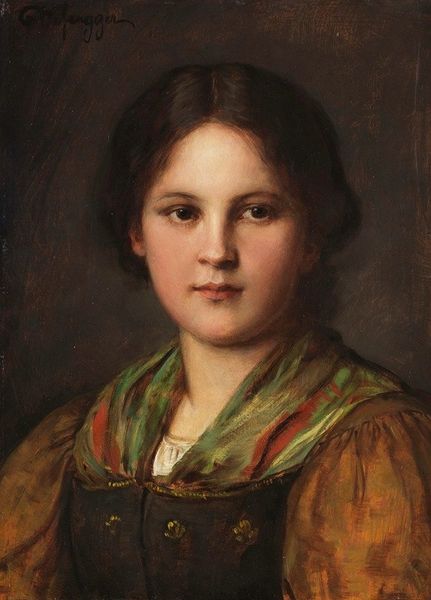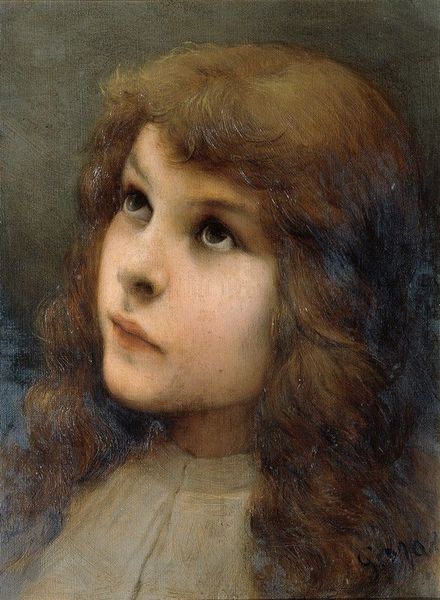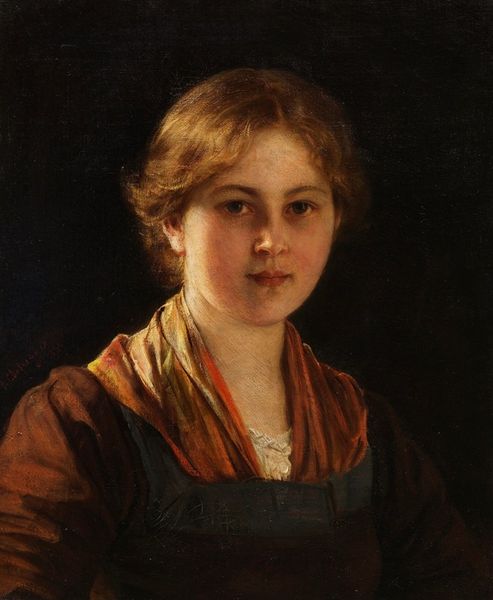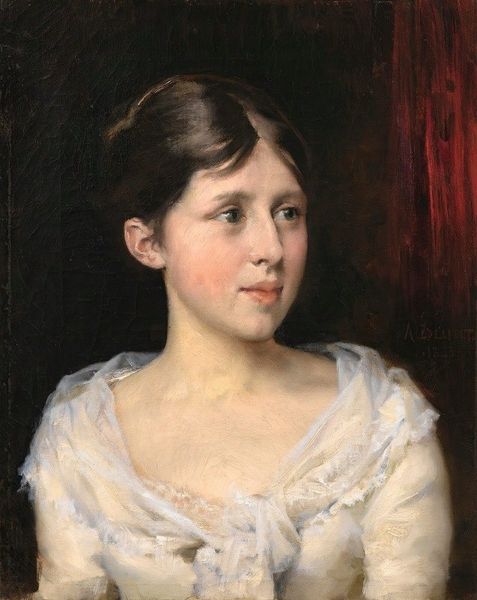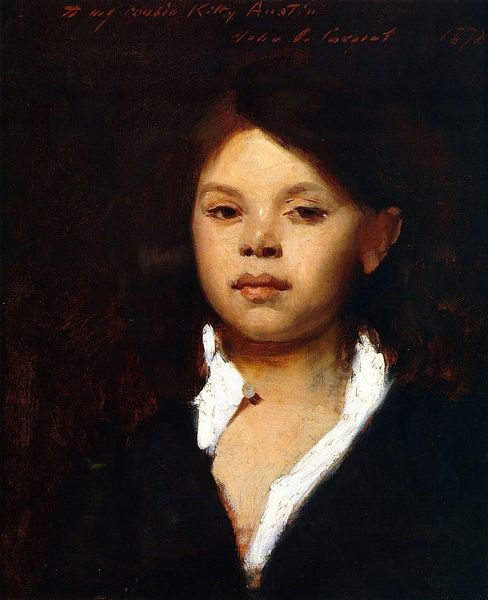
oil-paint
#
portrait
#
neoclacissism
#
portrait
#
oil-paint
#
romanticism
Copyright: Public Domain: Artvee
Editor: So here we have Louis Léopold Boilly's oil portrait, "Caroline Mortier de Trévise," created around 1810-1812. I'm really struck by the subject's direct gaze and her quite simple attire. What story can we tell about this piece? Curator: It's crucial to consider this portrait within the social context of post-Revolutionary France. Boilly was adept at capturing the ascendant bourgeoisie. Do you see how her clothes, while not opulent, denote a certain status? The seemingly plain style also reflects the Neoclassical taste for restrained elegance then coming into fashion and displacing overtly royal styles. Editor: I do. I suppose my modern eyes just immediately interpret "simple" as unpretentious, but in her time that simple design broadcast wealth? Curator: Precisely. Boilly’s portraits provide us with visual documentation of subtle class signals. Note, too, the size of the portrait, probably for domestic consumption, a symbol of family pride and a carefully calibrated message to visitors. Her status is further highlighted by the dark, blank background--focus is given primarily to her character as much as appearance. Editor: That makes perfect sense. Now that you've pointed it out, I can also see an influence of Romanticism, maybe with that sort of introspective, but slightly distant, gaze of hers. Curator: Interesting point! I agree that the gaze engages the viewer but also projects a sense of personal depth, rather than merely depicting superficial beauty. This is, in part, Boilly acknowledging changing notions about art's purpose—to reveal character as well as status. And more importantly to give visibility to those typically locked from social visibility. Editor: So it's more than just a portrait of a girl; it is an example of a societal shift. I see it in a new light now! Curator: Absolutely. And art history helps us decipher those silent yet potent narratives held within an image.
Comments
No comments
Be the first to comment and join the conversation on the ultimate creative platform.
